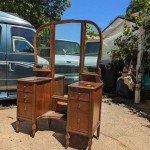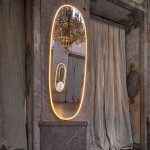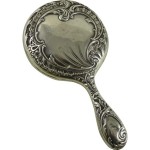Bathroom Mirror Framing: A DIY Guide to Elevate Your Space
A bathroom mirror is often a functional necessity, but it can also be a significant design element contributing to the overall aesthetic of the space. Standard, builder-grade mirrors, while practical, frequently lack character and visual appeal. Framing a bathroom mirror is a relatively simple and cost-effective DIY project that can dramatically transform the look of the room, adding personality and sophistication.
This article provides a comprehensive guide to framing a bathroom mirror, outlining the necessary materials, tools, and step-by-step instructions. It also addresses common challenges and offers tips for ensuring a professional-looking finished product.
Planning and Preparation: The Foundation of Success
Before embarking on the physical construction, careful planning and preparation are crucial. This stage involves assessing the existing mirror, selecting appropriate materials, and gathering the necessary tools.
First, evaluate the existing mirror. Determine its dimensions precisely, as these measurements will dictate the size of the frame. Note the mirror's placement and any obstructions, such as light fixtures or outlets, that might interfere with the frame. Consider the style of the bathroom and the desired aesthetic. The frame should complement the existing decor, whether it's modern, traditional, rustic, or minimalist. Take into account the size of the bathroom; a large, ornate frame might overwhelm a small space, while a delicate frame could get lost in a larger room.
Next, select the framing material. Wood is a popular choice due to its versatility and ease of workability. Options include pine, oak, maple, and MDF (medium-density fiberboard). Pine is a budget-friendly and readily available option, while oak and maple offer greater durability and a more refined appearance. MDF is a smooth, uniform material that is ideal for painting. Alternatives to wood include metal, such as aluminum or stainless steel, which offer a sleek, contemporary look. These materials often require specialized tools for cutting and joining.
Once the material is chosen, decide on the profile and width of the frame. The profile refers to the shape of the framing material, which can range from simple square edges to ornate decorative moldings. The width of the frame should be proportionate to the size of the mirror and the overall dimensions of the bathroom. Wider frames tend to make a statement, while narrower frames offer a more subtle enhancement. Consider purchasing pre-made molding from a home improvement store. This eliminates the need for a router and can streamline the process.
Finally, gather the necessary tools. Essential tools include a measuring tape, a miter saw or miter box and hand saw, a level, a pencil, wood glue or construction adhesive, clamps, sandpaper, safety glasses, and a caulking gun. Depending on the chosen material and finishing technique, additional tools such as a drill, screws, nails, a paint brush, stain, sealant, and a nail gun might be required. Ensure all tools are in good working order and that safety equipment, such as safety glasses, are worn throughout the project.
Construction: Building the Frame
With the planning and preparation completed, the construction phase begins. This involves cutting the framing material to size, assembling the frame, and attaching it to the mirror.
Start by accurately measuring and cutting the framing material. Using the dimensions obtained earlier, cut four pieces of framing material, ensuring that each piece is cut at a 45-degree angle at both ends using a miter saw or miter box and hand saw. These angled cuts are essential for creating a clean, seamless corner joint. Precise measurements and accurate cuts are critical to ensuring a square and well-fitting frame. Double-check all measurements and cuts before proceeding. It is frequently advisable to practice the miter cuts on scrap pieces before cutting the final pieces.
Next, assemble the frame. Apply wood glue or construction adhesive to the mitered ends of each piece. Carefully align the pieces and clamp them together to create a square frame. Use corner clamps or bar clamps to ensure that the corners are tight and aligned. Allow the glue or adhesive to dry completely according to the manufacturer's instructions. This usually takes several hours, or preferably overnight. Wipe away any excess glue or adhesive with a damp cloth before it dries.
Once the frame is dry, reinforce the corners for added stability. This can be achieved by using finish nails or screws to secure the corners. If using nails, pre-drill pilot holes to prevent the wood from splitting. If using screws, countersink the screw heads to create a flush finish. Alternatively, corner brackets can be attached to the back of the frame for additional reinforcement. These brackets provide extra support and help to maintain the squareness of the frame.
After the frame is assembled and reinforced, it's time to prepare it for finishing. Sand the entire frame with fine-grit sandpaper to smooth out any rough edges or imperfections. Pay particular attention to the corners to ensure a seamless transition. Remove any sanding dust with a tack cloth. If desired, fill any gaps or imperfections with wood filler. Allow the filler to dry completely and then sand it smooth. This step is essential for achieving a professional-looking finish.
Finishing and Installation: Completing the Project
The final stages involve finishing the frame to match the bathroom's decor and attaching it securely to the mirror.
Select a finish that complements the bathroom's style. Options include painting, staining, and varnishing. For a painted finish, apply a primer coat followed by two coats of paint, allowing each coat to dry completely before applying the next. Choose a paint that is specifically formulated for bathrooms, as it will be more resistant to moisture and humidity. For a stained finish, apply the stain evenly and wipe off any excess. Allow the stain to dry completely and then apply a clear coat of varnish or sealant to protect the wood and enhance its durability. Ensure adequate ventilation during the finishing process and wear appropriate safety gear, such as a respirator mask.
Before attaching the frame to the mirror, thoroughly clean the mirror surface. Remove any dust, dirt, or fingerprints. Use a glass cleaner and a microfiber cloth for best results. This will ensure a strong bond between the frame and the mirror.
There are several methods for attaching the frame to the mirror. One common method involves using mirror adhesive. Apply a generous bead of mirror adhesive to the back of the frame, taking care not to apply it too close to the edges to prevent it from squeezing out when the frame is pressed against the mirror. Carefully align the frame with the mirror and press it firmly into place. Use painter's tape to secure the frame to the mirror while the adhesive dries. Allow the adhesive to dry completely according to the manufacturer's instructions, which is typically 24 to 48 hours.
An alternative method involves using mounting clips or brackets. Attach the clips or brackets to the back of the frame and then position the frame around the mirror. Secure the clips or brackets to the wall using screws. This method provides a more secure attachment but requires drilling into the wall. Ensure that the mounting clips or brackets are properly aligned and that the screws are securely fastened. Consider the weight of the framed mirror and select appropriate mounting hardware that can support the load.
Another option is to use construction adhesive and small dabs of silicone caulk. Apply construction adhesive to the back of the frame and then add small dabs of silicone caulk to the corners and along the edges. The silicone caulk acts as a temporary adhesive while the construction adhesive cures. Press the frame firmly against the mirror and use painter's tape to hold it in place until the adhesive is fully cured. This method offers a strong and durable bond.
Once the frame is securely attached to the mirror, inspect the finished product. Ensure that the frame is level and that there are no gaps or imperfections. Apply a bead of caulk around the edge of the frame where it meets the mirror to create a seamless and waterproof seal. Smooth the caulk with a wet finger or a caulking tool. Remove any excess caulk with a damp cloth. The caulk will prevent water from seeping behind the frame and damaging the mirror or the wall. Allow the caulk to dry completely before using the bathroom.
By following these steps, homeowners can successfully frame their bathroom mirrors and transform the look of their bathrooms. A framed mirror adds a touch of elegance and sophistication to any bathroom, making it a more inviting and enjoyable space.

Mirror Frame Diy How To Update A Basic Bathroom Our Faux Farmhouse

Diy Framed Bathroom Mirrors Living With Lady

Diy Bathroom Mirror Frame For Under 10 O Hayley Blog

Diy Stick On Mirror Frame Sawdust Sisters

Diy Bathroom Mirror Frame With Molding The Happier Homemaker

Diy Bathroom Mirror Frame Without Removing Clips Her Happy Home

Mirror Frame Diy How To Update A Basic Bathroom Our Faux Farmhouse

How To Make An Easy Diy Bathroom Mirror Frame Momhomeguide Com

How To Make A Diy Bathroom Mirror Frame Thediyplan

20 Creative Diy Mirror Frame Ideas To Inspire Your Next Project Bathroom Mirrors Makeover








